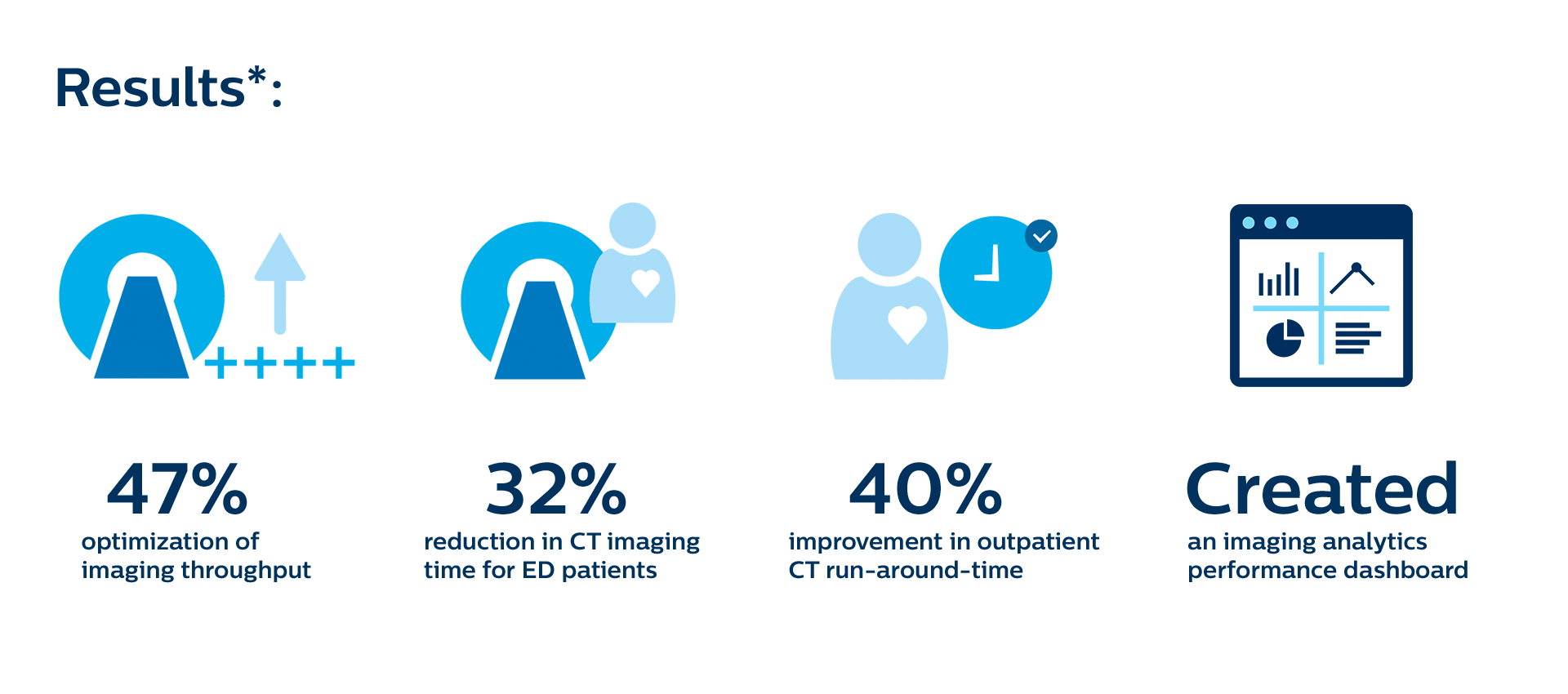Implementing process changes to increase radiology workflow efficiency
A large non-profit health care system serving more than 500,000 residents in the southeast was looking to identify and implement radiology workflow performance improvements. Philips clinical consultants were engaged as partners to define and implement improvements which would result in efficiencies in several areas including productivity, physician and patient satisfaction, and employee engagement.


47% optimization of imaging throughput

32% reduction in CT imaging time for ED patients

40% improvement in outpatient CT run-around-time

Created an imaging analytics performance dashboard
Assessing the workflow in radiology
The goal for the Imaging Department was to be positioned to capture market share despite the declining population of their community. A comprehensive, multi-channel approach was taken to bring together key stakeholders to improve workflow. An overarching aim of the project was to define key metrics and performance targets to establish valid KPIs and subsequently help with throughput to maintain a positive patient experience while providing more efficient care. Process and practice routines were analyzed and discussed with the stakeholders to discover inefficiencies. During the assessment, performance improvement opportunities were identified at two of three locations including opportunities to optimize workflows, improve data capture, align staffing with testing demand, streamline protocols, reduce redundant paperwork, and enhance operational design.
Our approach to quality improvement for radiologists

Four staff workgroups were created to define the future state performance improvement tasks. The workgroups organized were scheduling, throughput, quality, and data capture. Each group was organized to demonstrate a new way of working that merges skills and capabilities. This approach, termed ‘Operational Intelligence’, is a partnership of continually synchronized people, process, and technology. · People – engagement and communication · Process – standardization around best practice · Technology – enablement of work In order to affect true performance improvement, ‘buy-in’ from many hospital entities was needed. Philips and hospital project leaders were able to bring together the clinical, operational, and functional stakeholders. Philips consultants guided each group to a set of recommendations which were then implemented across the imaging department.
Results
Throughput improvement was realized across the department (CT, Ultrasound, X-ray) with time savings of as much as 47% at the end of the consulting engagement. Data accuracy, scheduling, workflows, and quality standards were all addressed, and these learnings contributed to the project’s success. Significant time savings were realized in several key areas: · 40% improvement in outpatient CT turnaround times · 4% improvement in inpatient CT turnaround times · Significant improvements in outpatient metrics for ultrasound and X-ray Of particular interest to the health system was the reduction for all CT imaging in the Emergency Center from a mean daily time of 125 minutes to 85 minutes – a 32% improvement. *Results based a case study and are not predictive of other results. Results may vary.
